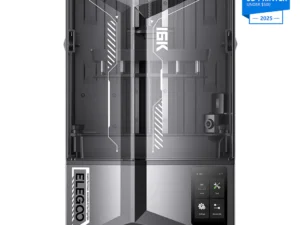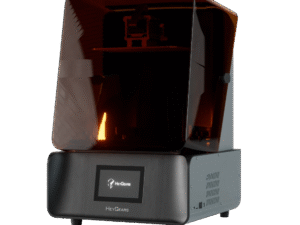Resin Printers
A resin 3D printer is a type of 3D printer that uses liquid, photosensitive resin to build objects layer by layer. These printers are known for their high-resolution printing capabilities, producing smooth, detailed objects. They utilize light (typically UV) to cure (harden) the resin, solidifying it into a three-dimensional structure.
Showing all 2 results
Stereolithography (SLA):
One common type of resin printer uses a laser to cure the resin, layer by layer. The laser follows a path across the liquid resin to shape each layer.
Digital Light Processing (DLP):
Another type of resin printer uses a digital light projector to cure the resin. This projector casts light onto the resin, curing it in one layer at a time.
Masked Stereolithography (MSLA):
MSLA printers use a combination of a UV light source and a mask to cure the resin. The mask controls the light exposure, allowing for more precise printing.
Process:
The build platform (where the object is printed) dips into the liquid resin, and the light source cures the resin into the desired shape for that layer. The platform then moves up, and the process is repeated for each subsequent layer.
Advantages:
Resin printers are known for their high-resolution printing, resulting in fine details and smooth surfaces. They are also suitable for printing small and complex objects.
Disadvantages:
Resin printers can be messier and require specialized cleaning and post-processing steps. They also require the user to carefully manage the resin levels and replacement.


